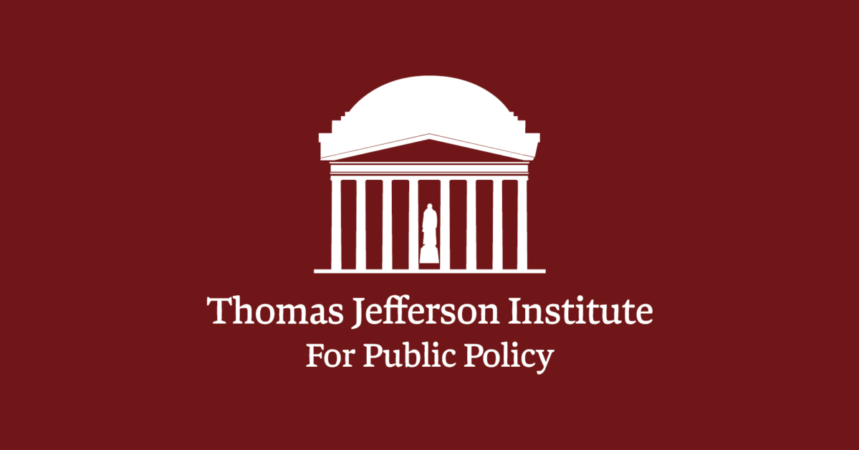As President Lincoln once said, sometimes a man has to write his John Hancock large in the face of conventional wisdom. So here goes.
Two-thirds of the American and Virginian economy is based on consumer spending as measured by Gross Domestic Product. Although some insightful analysts view the end-product oriented GDP as a flawed measuring rod, whatever your preferred measure, re-stoking the lagging financial confidence of middle-class families is now job number one. So for the most insistent Keynesian of the Internet left and the loudest Friedmaniac on the talk-show right the one sure-fire way to light that economic furnace is to free the great American and Virginia middle class from the burden of the federal income tax starting retroactively on January 1, 2008 and running through to the start of 2011.
That’s right, let these Americans who fight the wars, raise the children and do the dirty work to keep the arteries of commerce flowing keep what they earn. Based on statistical data available on the IRS website, roughly 80 percent of American families, and a somewhat higher percentage in Virginia, that pay the federal income tax had adjusted gross incomes of $85,000 or less.
Free them all, 2 million families in our Commonwealth, over 70 million nationwide. Assuming this No Income Tax proposal goes into effect retroactively to Jan. 1, 2008, and runs through tax year 2010, the combined reduction in federal revenue projects to around $790 billion under current conditions. Now, I know what you are probably thinking: “Get a grip Mr. G. Even in Bailout Nation, eliminating federal income taxes for four out of five American families is a bridge too far.” Truth is this three-year No Income Tax initiative is smaller, not to mention fairer, than the two-year, trillion dollar price tags of the programs favored by the economic gurus of team Bush and team Obama.
Based on 2006 statistics, these four out of five American families paid roughly $220 billion in federal income taxes. Virginians, on average, had to give roughly 30 percent of their income to Uncle Sam according to available statistics and another more than nine percent to state and local governments. Recognizing the pressure of such burdens in tough economic times, both winning Democrat Barack Obama and losing Republican John McCain agreed on the need for some immediate middle-class tax relief. Admittedly, my proposal is far bolder in scope than anything in modern American history, and such a retroactive tax reduction is totally new ground. However, given that the 2008 presidential campaign demonstrated bipartisan support to the fundamental concept, the legislative resolution therefore becomes one of drafting the best plan for Virginia and America. So I ask: Why not be John Hancock and write history large, freeing most American workers and their families from the Old Order?
Perhaps a crisis created by trillions in risky private debt can be cured by amassing even greater amounts of public sector IOUs for bailouts and infrastructure projects without a truly stimulative demand-side tax cut. The greatest president of the 20th century, Franklin Delano Roosevelt, tried his version of Keynesian economics, but with only limited success. In the 1990s, the Japanese learned that many of the same programs being tried by our leaders today didn’t help them resolve a similar credit crisis.
If we have learned anything in 2008, then surely it is this: There are few experts in economics, finances and politics who know half of what they claim to be certain of.
Skeptics of my No Income Tax initiative will point to studies showing that government spending programs give a bigger boost to the demand side of the economy than a tax cut of the same dollar amount. This occurs because many consumers save some of the tax cut or use a portion to pay down debt. However, these academic models only strengthen my case, further proving the need to have three different moving parts – monetary action, infrastructure spending and a demand-side No Income Tax initiative – as ingredients in the optimal stimulus package.
In order to extend the reach of the No Income Tax initiative aimed at the middle class the best approach is to keep the Federal Reserve at full bore, while downsizing the politicians in Congress who want to play Santa Claus.
We have tried the code-tweaking approach to middle-class tax relief under Presidents Reagan, Clinton and Bush. But this time we need to take it to the Declaration of Independence level. Yes, we need more business investment, but such capital investment isn’t an end in itself, it is premised on being able to produce goods and services that consumers can afford to buy. This isn’t possible without their having confidence in their own balance sheets.
Let’s make this coming April 15 a new Independence Day, forged in our current Valley Forge winter of economic doubt and give Virginia families a new burst of economic freedom.






